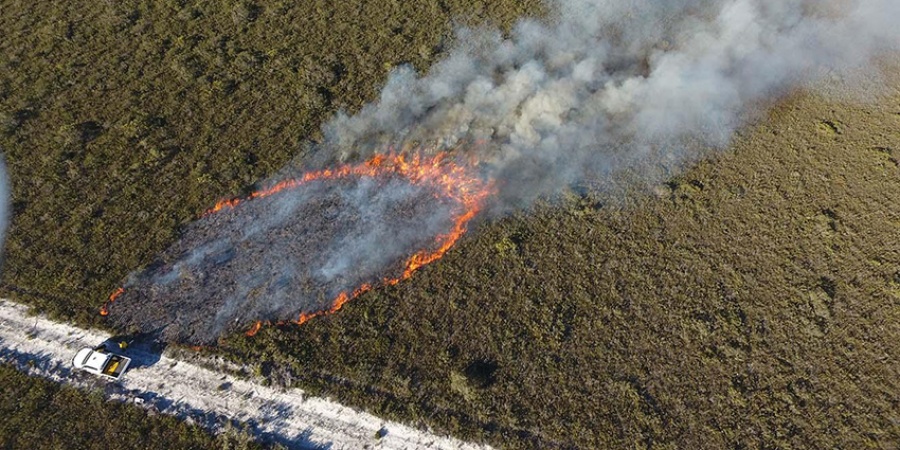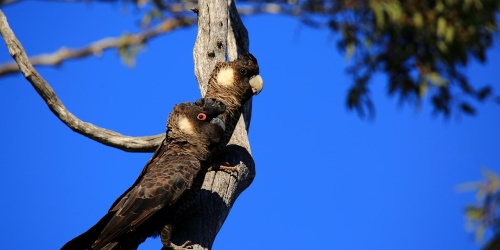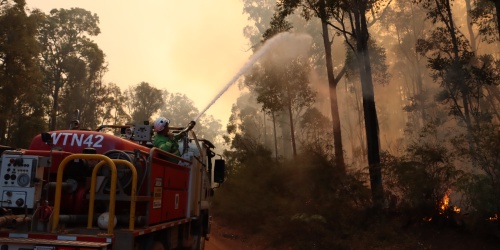
Prescribed burn in Cape Arid National Park. Photo by DBCA
DBCA and its former agencies has led a comprehensive fire research and development program in Western Australia for many years. Our current research themes include:
- bushfire risk management analysis
- fuel assessment and management
- fire behaviour
- fire ecology and biodiversity
- fire regimes.
DBCA’s fire research scientists are known for their work on fire ecology, fire behaviour and the impact of fire on the environment.
DBCA research projects
Current or recently completed research projects include:
- Long-term monitoring of Kimberley threatened fauna response to fire mosaics created through savannah management
- Pre-and post-fire in banksia woodlands survey examining plant community responses to varying fire intervals and time since fire, as well as weed invasion and management treatments.
- Fire severity survey in jarrah and other forests to refine fire severity mapping and reporting protocols. Research will expand to examine longer term effects of varying severity and examining fuel hazard relative to time since fire.
- A national collaborative project examining fire seasonality impacts on ecosystems and threatened species, with south-west forests identified as a focal system.
- Relationships between lightning ignition in south-west forests and major climate variability models have been investigated in a collaborative study with CSIRO and the Bureau of Meteorology.
- Post-fire assessments quantifying consumption of fine and woody fuels, and fire-induced tree loss at forest monitoring sites burnt in the December 2019 Yourdamung bushfire.
- Banksia woodland study comparing how prescribed burns and bushfires affect seed availability of Banksia attenuata and B. menziesii, two important food sources for Carnaby’s Cockatoos.
Collaborations with the Commonwealth Bushfire and Natural Hazards Co-operative Research Centres (CRC), the Bureau of Meteorology, Department of Fire and Emergency Services and AFAC have assisted in ensuring the results of bushfire research is quickly passed on to Australia’s fire agencies, land managers and communities. DBCA looks forward to continuing this collaboration with the new federal Natural Hazards Disaster Resilience and Recovery Centre.
DBCA annual research reports and science information sheets detail some of the more important work in WA over the last two decades. Relevant science information sheets and the Landscope article, A tale of two bushfires, are available for download at the bottom of this page.
Key scientific principles of fire management
- Principle 1 - Fire is an environmental factor that has influenced, and will continue to influence, the nature of Western Australia’s landscapes and biodiversity.
- Principle 2 - Species and communities vary in their response to fire. Knowledge of life histories, traits, sensitive periods (season), tolerable intervals and habitat needs of native plants and animals should underpin the use of fire in natural ecosystems.
- Principle 3 - The response of species and ecosystems to fire are complex and shaped by interacting factors such as: fire, climate and weather, landforms, vegetation and, interacting processes.
- Principle 4 - Fire management is required for two primary reasons, which are not necessarily mutually exclusive: a) to reduce the occurrence of large, intense bushfires and b) to conserve biodiversity. Fire management should consider both protection and ecological objectives to optimise outcomes.
- Principle 5 - Fire diversity promotes biodiversity. An interlocking mosaic of patches of vegetation—representing a range of fire frequencies, intervals, seasons, intensities, and scales—need to be incorporated into ecologically-based fire regimes to optimise the conservation of biodiversity at the landscape scale.
- Principle 6 - Avoid applying the same fire regime (interval, season, intensity) over large areas for long periods, and avoid extreme regimes, such as very frequent or very infrequent fire intervals, over large areas.
- Principle 7 - The scale and pattern of the fire-induced mosaic should a) enable dispersal of young native animals b) optimise boundary habitat c) optimise connectivity, or the ability of animals to move through the landscape and, d) retain patches of long unburnt habitat if appropriate.
- Principle 8 - Details on the presence and potential spread of threatening processes such as introduced predators, invasive plants or pathogens that may respond to fire, should be used to plan fire management activities.
- Principle 9 - The damage potential, suppression difficulty and biological impact of a fire and the rate of recovery following fire are in direct proportion to the fire's intensity and sizes.
- Principle 10 - Bushfire can damage and destroy both conservation and community values, so a systematic and structured approach must be used to identify and manage the consequences of such an event.
- Principle 11 - Fire management should continue to adapt to new knowledge gained through research, monitoring and experience.
Useful references
Burrows ND (2008) Linking fire ecology and fire management in south-west Australian forest landscapes. Forest Ecology and Management 255, 2394-2406.
Burrows N, Ward B, Wills A, Williams M, Cranfield R (2019) Fine-scale temporal turn-over of jarrah forest understorey vegetation assemblages is independent of fire regime. Fire Ecology 15:10.
Corey B, Andersen AN, Legge, S, Woinarski JCZ, Radford I, Perry JJ, (2019) Better biodiversity accounting is needed to prevent bioperversity and maximize co-benefits from savanna burning. Conservation Letters published by Wiley Periodicals, Journal of the Society for Conservation Biology.
Enright NJ, Fontaine JB, Lamont BB, Miller BP and Westcott VC (2014) Resistance and resilience to changing climate and fire regime depend on plant functional traits. Journal of Ecology 102, 1572–1581.
Wittkuhn, RS., McCaw, L., Wills, AJ., Robinson, R., Andersen, AN., Van Heurck, P., Farr, J., Liddelow, G., and Cranfield, R. (2011). ‘Variation in fire interval sequence has minimal effects on species richness and composition in fire-prone landscapes of south-west Western Australia’, Forest Ecology and Management, vol. 261, no. 6, pp. 965-978.

